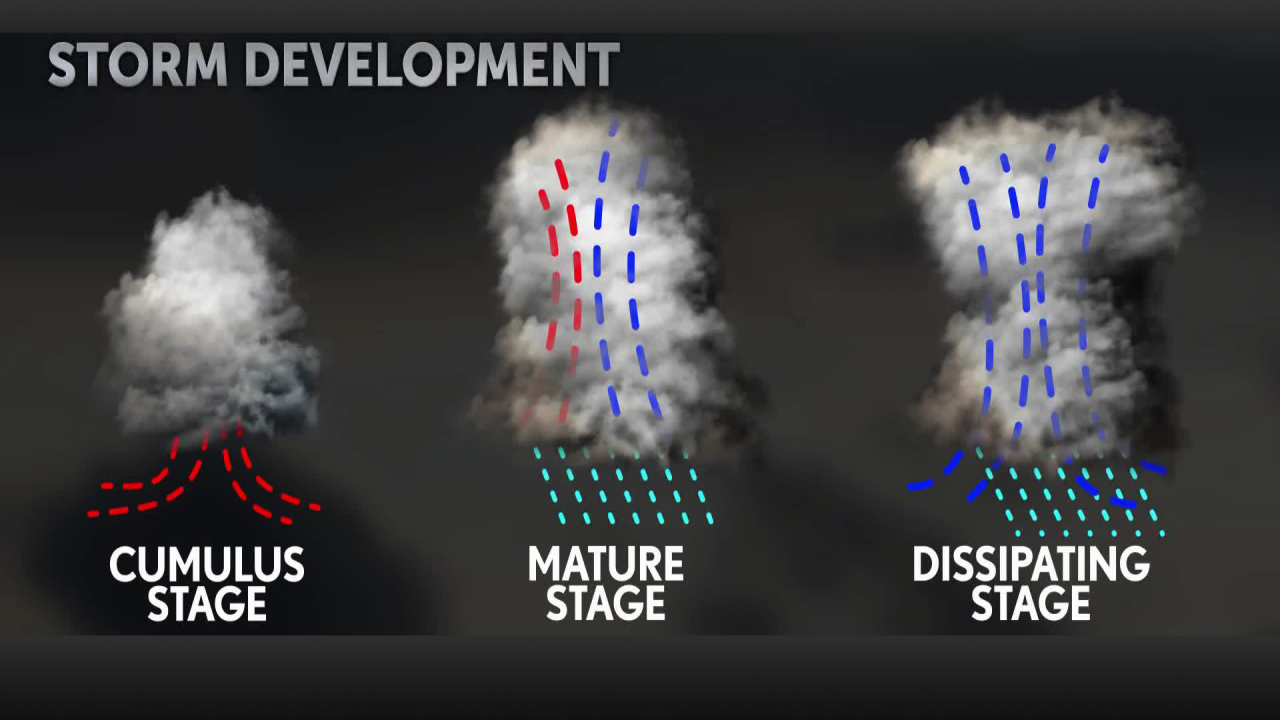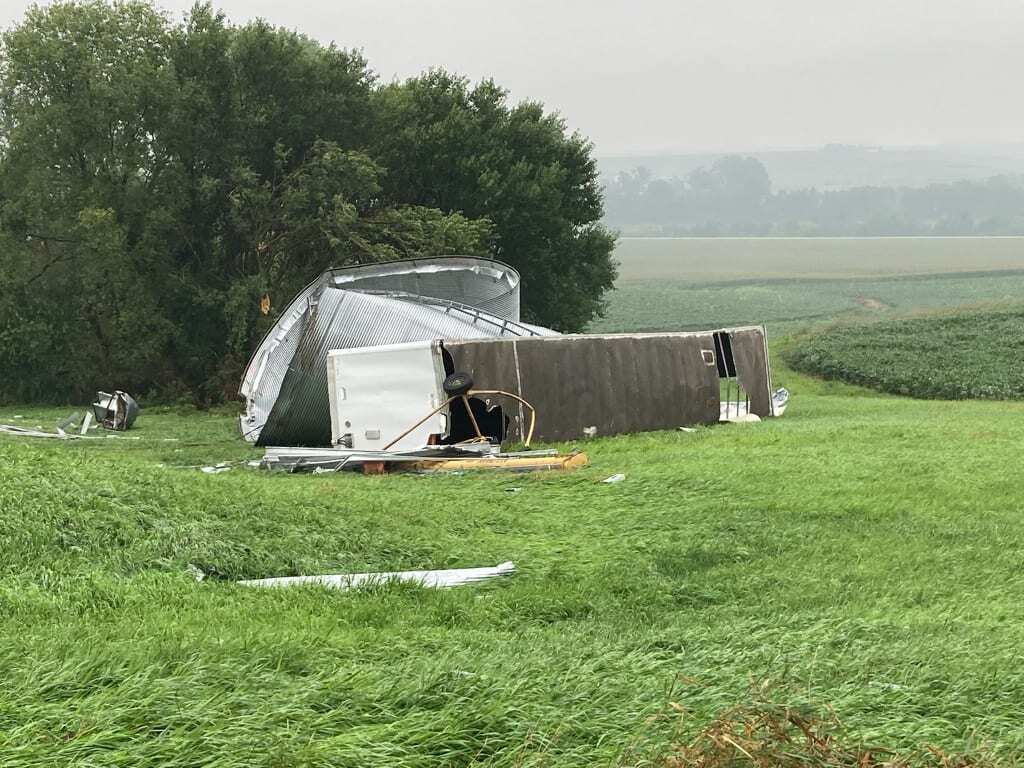Living in the Central Plains, most of us in Nebraska and Iowa understand severe storms and the damage wind and hail can cause. While we’re generally used to “normal” severe storms, sometimes a storm produces what is called a “microburst.”
So, what the heck is a microburst? We know updrafts and downdrafts exist within thunderstorms. Updrafts help grow a thunderstorm and “keep it alive” in its early stages while downdrafts appear as the storm matures. Essentially, a microburst is a sudden, STRONG downdraft as the air rushes down towards the ground and once it hits the ground, it spreads out in multiple directions very quickly. As the name suggests, microbursts happen in a small area of 2.5 miles or less.

Microbursts are what caused so much damage just south of Persia, IA during our last round of strong to severe storms on July 30th. Some of the damage included several metal grain bins being destroyed, large sheds losing parts of their roofs, an old barn destroyed, and large tree limbs down.

Other damage was reported near Minden, Oakland, and Hancock, but the worst of the damage occurred just south of Persia. It was there that winds were estimated near 100 mph, based on the damage.

Thankfully, there was no major damage to any homes reported and no injuries.
You can also read the full damage survey report from the National Weather Service in Valley.
Images used in this post were taken by Tiny Dollen.


